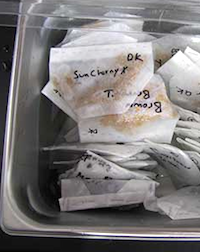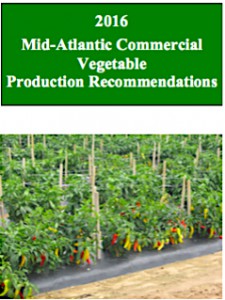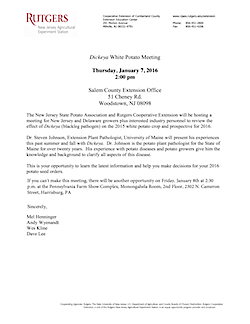All seed used in transplant production, as well as any transplants brought into the greenhouse should be certified ‘clean’ or disease-free. Important diseases such as Bacterial leaf spot of tomato and pepper can cause major problems in transplant production if introduced in the greenhouse. Bacterial leaf spot of tomato and pepper can be seed-borne and infested seed can be a major source of inoculum in the greenhouse and cause problems in the field later in the growing season.
As a rule for any crop, any non-certified or untreated seed should be treated, if applicable, with a Clorox treatment, or hot-water seed treatment, or dusted to help minimize bacterial or damping-off diseases. Organic and conventional tomato growers who grow a significant number of heirloom tomatoes should consider using the hot water seed treatment to help reduce the chances for bacterial problems.
For more information on seed treatments and products labeled for use in the greenhouse please see Tables E-13 and E-14 or specific crop sections in the 2016 Mid-Atlantic Commercial Vegetable Production Recommendations Guide.

 Daily passes for the trade show and educational sessions are available for $50 a person. NJ Vegetable Grower Association memberships are $100 for 2 people who may attend the trade show and educational sessions all day/every day. Click the Information & Registration link above for more information on hotel and meal reservations. Members receive the comprehensive 2016 Commercial Vegetable Production Recommendations.
Daily passes for the trade show and educational sessions are available for $50 a person. NJ Vegetable Grower Association memberships are $100 for 2 people who may attend the trade show and educational sessions all day/every day. Click the Information & Registration link above for more information on hotel and meal reservations. Members receive the comprehensive 2016 Commercial Vegetable Production Recommendations. 
